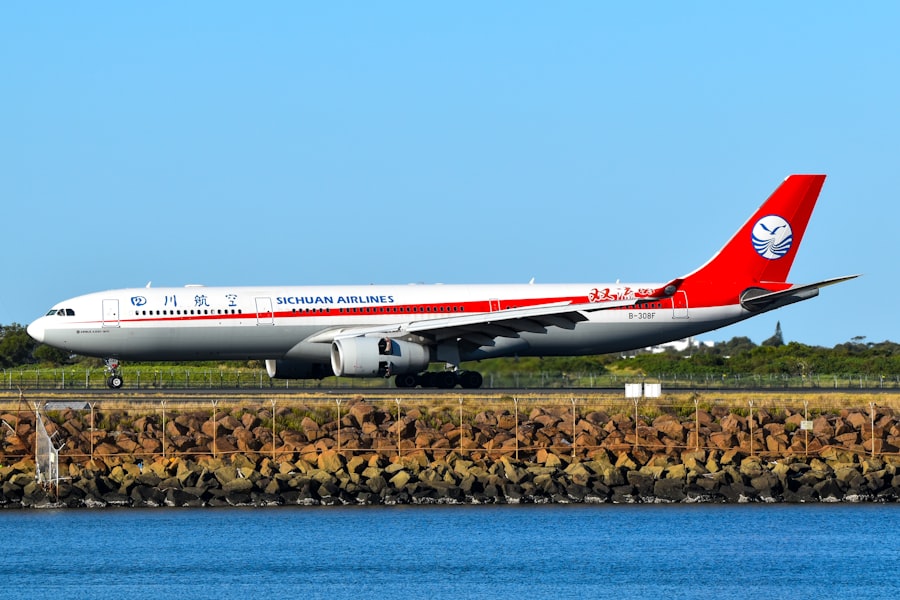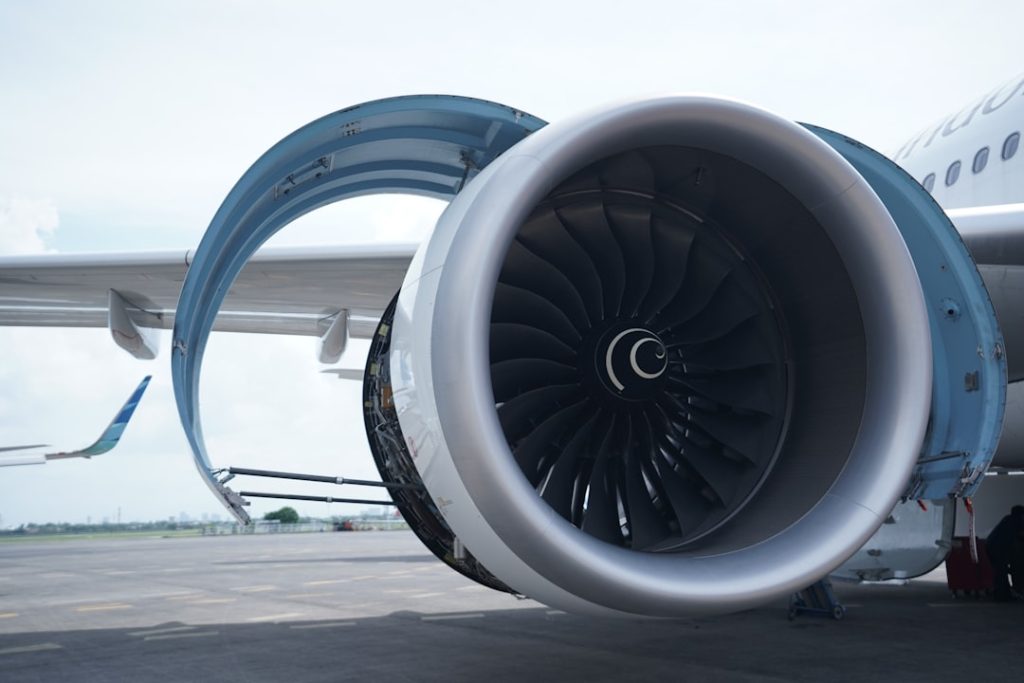The Airbus A330 is a wide-body twin-engine aircraft that has become a staple in the fleets of airlines around the world since its introduction in the early 1990s. Designed for medium to long-haul routes, the A330 offers a unique blend of efficiency, comfort, and versatility, making it a popular choice for both passenger and cargo operations. With its spacious cabin, advanced aerodynamics, and robust performance capabilities, the A330 has established itself as a reliable workhorse in commercial aviation.
The aircraft is available in several variants, including the A330-200 and A330-300, each tailored to meet specific operational needs. The A330-200 is known for its shorter fuselage and increased range, while the A330-300 features a longer body that allows for greater passenger capacity. Additionally, the A330neo, an upgraded version of the original model, incorporates new engines and aerodynamic improvements that enhance fuel efficiency and reduce emissions.
This evolution of the A330 family reflects Airbus’s commitment to innovation and sustainability in aviation.
Key Takeaways
- The A330 is a popular wide-body aircraft known for its versatility and efficiency in long-haul flights.
- Pilots should be familiar with the A330’s capabilities, including its range, payload, and fuel efficiency, to optimize flight planning and operations.
- Mastering the A330’s flight controls and systems is essential for safe and efficient operation, including understanding the fly-by-wire technology and autopilot features.
- Optimizing performance and fuel efficiency on the A330 involves careful flight planning, weight management, and utilizing advanced features such as continuous descent approaches.
- Navigating long-haul flights with the A330 requires careful consideration of factors such as route planning, weather monitoring, and crew rest management.
Understanding the A330’s capabilities
The A330 is renowned for its impressive range and payload capabilities, making it suitable for a variety of missions. Depending on the specific model and configuration, the A330 can carry between 250 to 440 passengers over distances of up to 7,500 nautical miles. This extensive range allows airlines to operate non-stop flights on long-haul routes that connect major cities across continents.
The aircraft’s ability to operate efficiently at high altitudes and in diverse weather conditions further enhances its operational flexibility. In terms of cargo capacity, the A330 is equipped with a large cargo hold that can accommodate a significant amount of freight. The aircraft’s design allows for easy loading and unloading of cargo, making it an attractive option for cargo airlines and freight operators.
The versatility of the A330 extends beyond passenger transport; it is also used for military applications, medical evacuation missions, and as a platform for aerial refueling. This adaptability underscores the aircraft’s role as a key player in both commercial and specialized aviation sectors.
Mastering the A330’s flight controls and systems

Pilots operating the A330 must familiarize themselves with its sophisticated flight control systems, which are designed to enhance safety and improve handling characteristics. The aircraft features a fly-by-wire system that replaces traditional mechanical controls with electronic interfaces. This technology allows for more precise control of the aircraft and provides pilots with enhanced situational awareness through various automated systems.
The fly-by-wire system also includes protections against excessive pitch, roll, and bank angles, which helps prevent pilot-induced errors during flight. In addition to the fly-by-wire system, the A330 is equipped with advanced avionics that facilitate navigation and communication. The aircraft’s glass cockpit features multiple displays that provide real-time information on flight parameters, navigation data, and system status.
Pilots can access critical information at a glance, allowing them to make informed decisions quickly. Understanding how to interpret these displays and utilize the various systems effectively is essential for successful A330 operations. Training programs for pilots typically include extensive simulator sessions that focus on mastering these systems under various flight scenarios.
Optimizing performance and fuel efficiency
| Vehicle Model | Engine Type | Fuel Efficiency (mpg) | Acceleration (0-60 mph) |
|---|---|---|---|
| Toyota Prius | Hybrid | 54 | 10.5 seconds |
| Tesla Model 3 | Electric | 141 | 5.3 seconds |
| Honda Civic | Gasoline | 36 | 8.2 seconds |
Fuel efficiency is a critical consideration for airlines operating the A330, especially in an era where environmental concerns are paramount. The aircraft’s design incorporates several features aimed at reducing fuel consumption while maintaining performance. For instance, the A330’s wing design includes winglets that improve aerodynamic efficiency by reducing drag during flight.
This enhancement allows the aircraft to achieve better fuel economy over long distances. Additionally, pilots can optimize fuel efficiency through careful flight planning and operational techniques. Utilizing optimal cruising altitudes and speeds can significantly impact fuel burn rates.
For example, flying at higher altitudes where the air is thinner can reduce drag and improve engine performance. Furthermore, implementing continuous descent approaches during landing can minimize fuel usage by allowing the aircraft to glide down to the runway rather than relying solely on engine power. By combining these strategies with the inherent efficiencies of the A330’s design, operators can achieve substantial cost savings while minimizing their environmental footprint.
Navigating long-haul flights with the A330
Long-haul flights present unique challenges that require careful planning and execution. The A330 is well-suited for these missions due to its range and passenger comfort features. When preparing for a long-haul flight, pilots must consider factors such as weather conditions, air traffic control restrictions, and potential alternate airports.
Thorough pre-flight briefings are essential to ensure that all crew members are aware of the flight plan and any contingencies that may arise during the journey. In-flight management during long-haul operations involves monitoring various parameters such as fuel consumption, engine performance, and cabin conditions. The A330’s advanced systems provide real-time data that allows pilots to make adjustments as needed throughout the flight.
Additionally, crew resource management plays a vital role in ensuring effective communication among team members during extended operations. Regularly scheduled breaks for flight crews are mandated by regulations to prevent fatigue and maintain alertness throughout long flights.
Utilizing advanced features and technology

The A330 is equipped with a range of advanced features that enhance both operational efficiency and passenger experience. One notable technology is the aircraft’s integrated cabin management system, which allows for precise control of lighting, temperature, and entertainment options throughout the cabin. This system not only improves passenger comfort but also contributes to overall operational efficiency by allowing crew members to manage cabin conditions more effectively.
Another significant advancement in the A330 is its use of modern navigation systems such as Global Positioning System (GPS) and Performance-Based Navigation (PBN). These technologies enable more accurate route planning and allow pilots to fly more direct paths between waypoints, reducing flight times and fuel consumption. The implementation of these systems reflects a broader trend in aviation toward increased reliance on technology to enhance safety and efficiency.
Maintenance and troubleshooting tips for the A330
Regular maintenance is crucial for ensuring the safety and reliability of the A330 throughout its operational life. Airlines typically follow stringent maintenance schedules that include routine inspections, component replacements, and system checks based on manufacturer guidelines. Understanding the specific maintenance requirements for each variant of the A330 is essential for maintenance crews to keep the aircraft in optimal condition.
In addition to scheduled maintenance, troubleshooting issues that arise during operations requires a thorough understanding of the aircraft’s systems. Maintenance personnel must be adept at diagnosing problems using onboard diagnostic tools and maintenance manuals provided by Airbus. For instance, if an alert appears on the cockpit displays indicating a potential issue with an engine or hydraulic system, technicians must be able to interpret these alerts accurately to determine appropriate corrective actions.
Continuous training and access to updated technical documentation are vital for maintenance teams to stay current with evolving technologies and procedures.
Tips for a smooth and successful A330 flight experience
To ensure a smooth flight experience aboard an A330, both crew members and passengers can take proactive steps before and during travel. For pilots, thorough pre-flight checks are essential to verify that all systems are functioning correctly before departure. This includes reviewing weight and balance calculations, confirming fuel loads, and ensuring that all navigation equipment is operational.
For passengers, understanding cabin features can enhance comfort during long flights. Familiarizing oneself with seat controls, entertainment options, and emergency procedures can contribute to a more enjoyable journey. Additionally, staying hydrated and moving around periodically during long-haul flights can help mitigate discomfort associated with extended periods of sitting.
Ultimately, whether operating or traveling on an Airbus A330, attention to detail in preparation and execution can lead to a successful flight experience characterized by safety, efficiency, and comfort.


